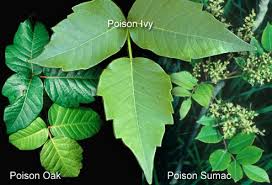How to avoid and treat poison ivy, oak and sumac

Now that school is out and summer is here, more people will be venturing into the woods to enjoy hiking, camping and other outdoor activities. Poison ivy, poison oak and poison sumac cause more allergic reactions than any other source, said Renee Miller, R.N., a certified specialist in poison information at the Tennessee Poison Center at Vanderbilt University Medical Center.
The leaves, vines and roots all contain the oils that cause the reaction. “Only about 15 percent of people are resistant to these plants, and sensitivity tends to decrease with age,” Miller said.
The most effective way to avoid an itchy reaction is to avoid coming into contact with the plant. Wearing long pants, long sleeves, gloves and boots will help. If a person is exposed to poison ivy, he or she should wash the area with soap and lukewarm water. “If you wash within the first 15 minutes of exposure, 100 percent of the oils can be washed away,” Miller said. “If you wait an hour, zero percent can be washed away.” Pets and clothes can also carry the oils.
Usually the rash shows up in 24 to 48 hours, but it can take longer or appear more quickly. “Once an exposure has occurred, topical steroids and antihistamines are the mainstay for treatment,” Miller said. “Prescription cortisone can halt the reaction if used early.” But once the reaction has progressed to the vesicular stage including small fluid-filled blisters, treatment with systemic steroids is the only effective option.
